
Panchakarma
Panch means five and karma means treatments. The five treatments are the representative of all therapies. So it is named panchkarma. It is mainly the shodhan treatment, where doshas are let out from the body. It gives quick and long lasting effect. We at Tambe ayurved deals in panchakarma treatment in vashi. Our clinic is near by vashi station.
According to Ayurveda, every human being is a unique phenomenon of cosmic consciousness, manifested through the five basic elements—Ether, Air, Fire, Water and Earth. Vata—a combination of ether and air, pitta—a combination of fire and water, and kapha—a combination of water and earth, are called the tridosha. These are the three humors or the three organizations of the body, which are also derived from consciousness. Each individual constitution or psycho-somatic temperament is determined by the relative proportions of these three doshas at the time of fertilization. When the embryo is formed, the constitution is determined. There are seven basic constitutions with one or more doshas predominant according to Ayurveda. They are: vata, pitta or kapha predominant, vata-pitta, pitta- kapha or kapha-vata predominant and vata-pitta-kapha in equal balance, a rare occurrence.
Every individual constitution has its own unique balance of vata, pitta and kapha (VPK) according to its own nature. This balance of VPK is the natural order. When this doshic balance is disturbed, it creates imbalance, which is disorder. Health is order; disease is disorder. Within the body there is a constant interaction between order and disorder, thus once one understands the nature and structure of disorder, one can re-establish order. Ayurveda believes that order lies within disorder.
Order is the state of health, as defined by Ayurveda. This exists when the digestive fire (agni) is in a balanced condition; the bodily humors (vata, pitta and kapha) are in equilibrium, the three waste products (urine, feces and sweat) are produced and eliminated normally, the seven bodily tissues (rasa, rakta, mamsa, meda, asthi, majja and shukra/artava) are functioning normally, and the mind, senses and consciousness are working harmoniously together. When the balance of these systems is disturbed, the disease (disorder) process begins.
Five Basic Shodanas: Cleansing Methods
- Vamana: therapeutic vomiting or emesis
- Virechan: purgation
- Basti: enema
- Nasya: elimination of toxins through the nose
- Rakta Moksha: detoxification of the blood
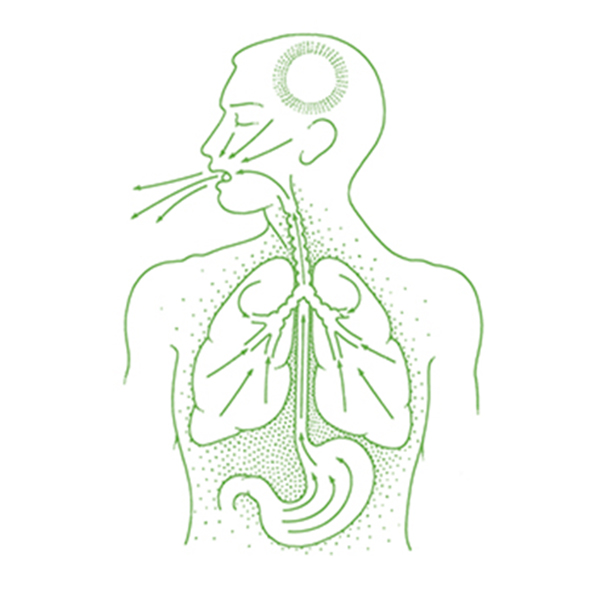
Vamana: Emesis Therapy
- When there is congestion in the lungs causing repeated attacks of bronchitis, colds, cough or asthma, the Ayurvedic treatment is therapeutic vomiting, vamana, to eliminate the kapha causing the excess mucus. Often times this also releases repressed emotions that have been held in the kapha areas of the lungs and stomach along with the accumulated dosha. Once the mucus is released, the patient will feel instantly relieved. It is likely that congestion, wheezing and breathlessness will disappear and that the sinuses will become clear. Therapeutic vomiting is also indicated in chronic asthma, diabetes, chronic cold, lymphatic congestion, chronic indigestion and edema.
- After vamana, resting, fasting, smoking certain herbal cigarettes, and not suppressing natural urges (i.e., urination, defecation, gas, sneezing, coughing) is recommended. If vamana is administered properly, the person should feel relaxation in the lungs, will be able to breathe freely, will have lightness in the chest, clear thinking, a clear voice, a good appetite, and all symptoms of congestion disappear.
Virechan: Purgation Therapy
- When excess bile, pitta, is secreted and accumulated in the gall bladder, liver and small intestine, it tends to result in rashes, skin inflammation, acne, chronic attacks of fever, biliary vomiting, nausea and jaundice. Ayurvedic literature suggests in these conditions the administration of therapeutic purgation or a therapeutic laxative. Purgatives help relieve the excess pitta causing the bile disturbance in the body. In fact, purgatives can completely cure the problem of excess pitta. When purgatives are used, the patient should not eat foods that will aggravate the predominant humor or cause the three humors to become unbalanced.
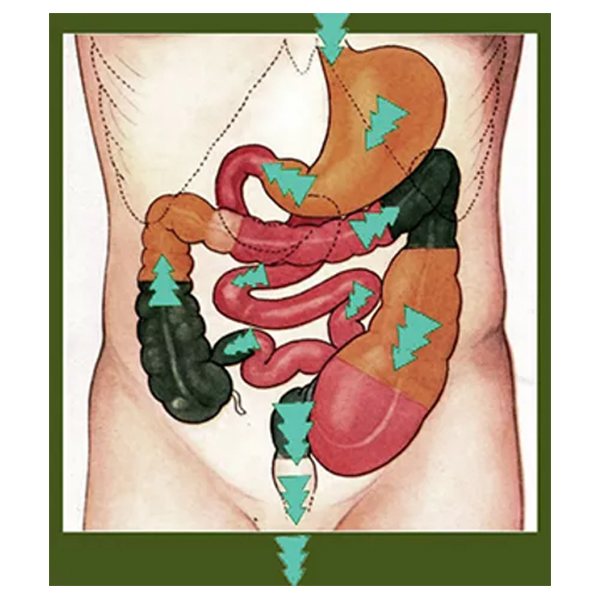
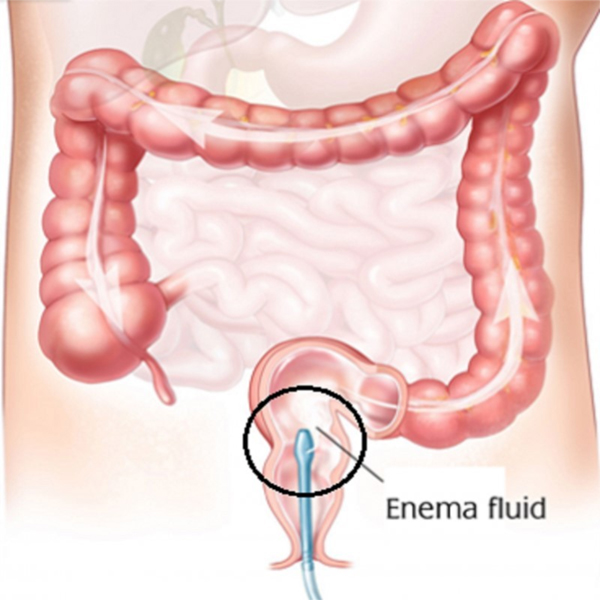
Basti: Enema Therapy
- Vata is a very active principle in pathogenesis (disease). If we can control vata through the use of basti, we have gone a long way in going to the root cause of the vast majority of diseases. Vata is the main etiological (causal) factor in the manifestation of diseases. It is the motive force behind the elimination and retention of feces, urine, bile and other excreta. Vata is mainly located in the large intestine, but bone tissue (asthi dhatu) is also a site for vata. Hence the medication administered rectally effects asthi dhatu. The mucus membrane of the colon is related to the outer covering of the bones (periosteum), which nourishes the bones. Therefore, any medication given rectally goes into the deeper tissues, like bones, and corrects vata disorders.
Nasya: Nasal Administration
- The nose is the doorway to the brain and it is also the doorway to consciousness. The nasal administration of medication is called nasya. An excess of bodily humors accumulated in the sinus, throat, nose or head areas is eliminated by means of the nearest possible opening, the nose.
- Prana, life force as nerve energy, enters the body through the breath taken in through the nose. Prana is in the brain and maintains sensory and motor functions. Prana also governs mental activities, memory, concentration and intellectual activities. Deranged prana creates defective functioning of all these activities and produces headaches, convulsions, loss of memory and reduced sensory perception. Thus nasal administration, nasya, is indicated for prana disorders, sinus congestion, migraine headaches, convulsions and certain eye and ear problems.
- Breathing also can be improved through nasal massage. For this treatment, the little finger is dipped into ghee and inserted into the nose. The inner walls of the nose are slowly massaged, going as deeply as possible. This treatment will help to open the emotions. (Nose tissue is tender and for this application the fingernail must be kept short to avoid injuring the delicate mucus membranes.) Since most people have a deviated nasal septum, one side of the nose will be easier to penetrate and massage than the other. The finger should not be inserted forcibly. The massage should proceed by slow penetration, the finger moving first in a clockwise and then counter-clockwise direction. By this means, the emotions that are blocked in the respiratory tract will be released. One may use this treatment each morning and evening. In this way, breathing patterns will change as the emotions are released and the eyesight also will improve.
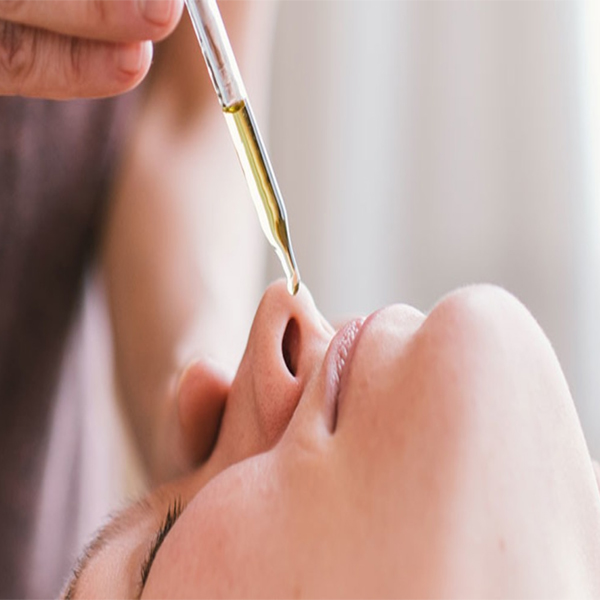
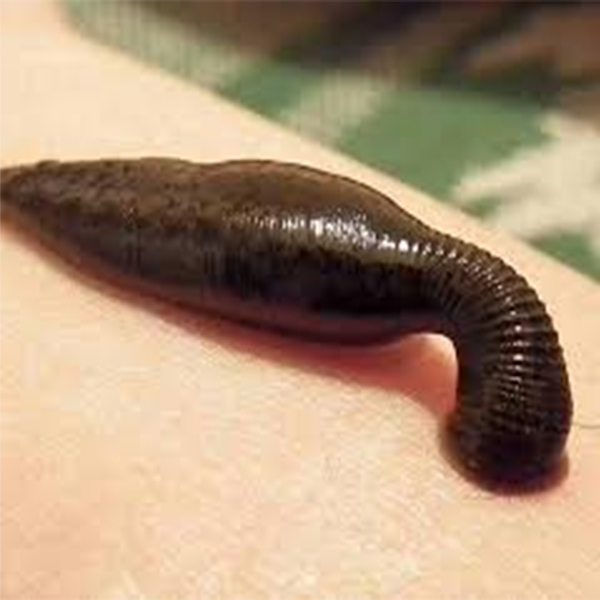
Rakta Moksha: Traditional Ayurvedic Method for Purification and Cleansing of the Blood
- Toxins present in the gastrointestinal tract are absorbed into the blood and circulated throughout the body. This condition is called toxemia, which is the basic cause of repeated infections, hypertension and certain other circulatory conditions. This includes repeated attacks of skin disorders such as urticaria, rashes, herpes, eczema, acne, scabies, leukoderma, chronic itching or hives. In such conditions, along with internal medication, elimination of the toxins and purification of the blood is necessary. Rakta moksha is also indicated for cases of enlarged liver, spleen and gout.
- Pitta is produced from the disintegrated red blood cells in the liver. So pitta and blood have a very close relationship. An increase in pitta may go into the blood causing toxicity, and thus many pitta-genic disorders. Extracting a small amount of blood from a vein relieves the tension created by the pitta-genic toxins in the blood. Leeches have been used as an alternative to bloodletting. Bloodletting also stimulates the spleen to produce anti-toxic substances that help to stimulate the immune system. Toxins are neutralized, enabling radical cures in many blood-borne disorders.
- Certain substances such as sugar, salt, yogurt, sour-tasting foods and alcohol are toxic to the blood. In certain blood disorders these substances should be avoided to keep the blood pure. For rakta moksha treatment other than bloodletting, there are blood-purifying practices involving herbs, gem therapy or color water therapy. For any rakta moksha treatment or related alternative treatment, it is beneficial to refrain from yogurt, salt, sugar, alcohol, marijuana, sour and fermented foods.
